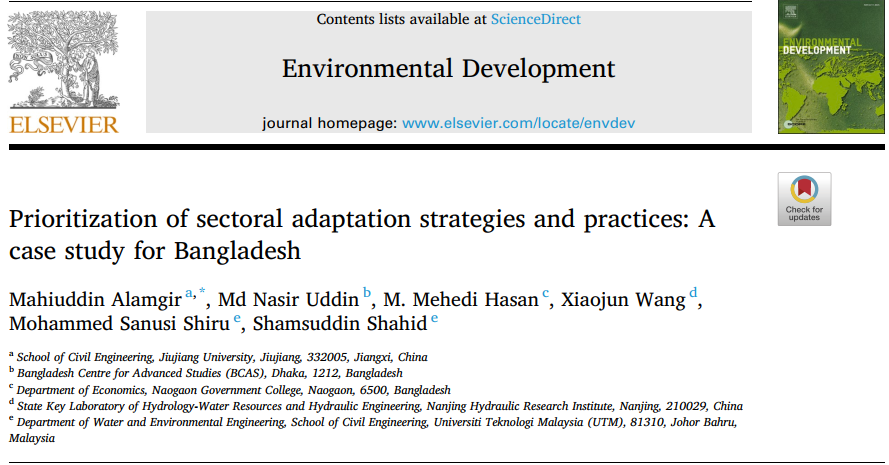Prioritization of sectoral adaptation strategies and practices: A case study for Bangladesh

Climate change adaptation has become a more serious issue to vulnerable countries like Bangladesh. The study areas, as one of the important food baskets of the country, has been experiencing wide-ranging extreme event (flood, riverbank erosion, cold wave, less and erratic rainfall, and prolonged droughts). Here severe affected sectors are agriculture; fisheries; livestock; housing; and drinking water, sanitation and public health. Through participatory Multi-Criteria Analysis (MCA), the adaptation strategies were prioritized based on the overall preferences of
multiple stakeholder opinions at different level (community/village, upazila/sub-district, and district/regional level). Therefore, using MCA methods of the study areas helped their ideas from different level actors/stakeholders to improve the adaptation strategy, practices and drivers leading to vulnerability. The study found that most priority of adaptation measures of different sector i. e Agriculture; Fisheries; Livestock; Housing; and Drinking Water, Sanitation and Health
sector; are Maize, and Sathi Fosol (mixed and relay culture); Livelihood Diversification; Adhi system (shared rearing of livestock); Rising plinth level, and Solar energy, and Ensure safe drinking water, and Enhance health facility and community clinic activities, respectively. The various mechanisms for coping and adaptation practices of different communities were identified in this study.
- Publication date : 1st March, 2023
- Publisher: Environmental Development
- Website: https://www.sciencedirect.com/science/article/pii/S2211464523000131
- Author(s): Mahiuddin Alamgir, Md Nasir Uddin, M. Mehedi Hasan, Xiaojun Wang, Mohammed Sanusi Shiru, Shamsuddin Shahid Download

